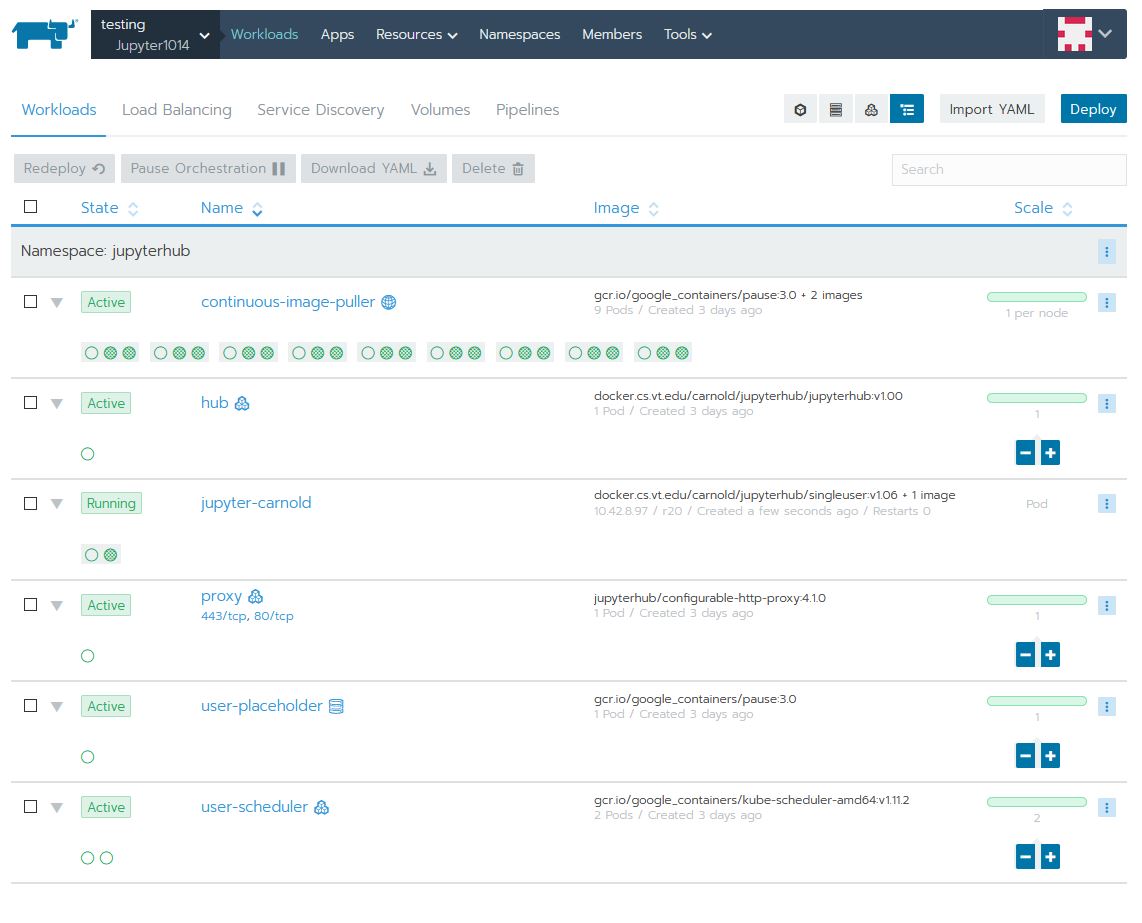Cloud Example Jupyter
Work in progress
Introduction
The goal of this project is to support a class teaching basic programming using Jupyter Notebook Jupyter notebook is a single process that supports only one person. To support a whole class, a jupyter notebook process will need to be run for each student. Jupyter offers a Jupyter Hub that automatically spawns these singe user processes. However, a single machine can only support around 50-70 students before suffering performance issues. Kubernetes allows this process to scale out horizontally by spreading the single-user instances across physical nodes. I will give a break down of different pieces needed to make this work and go into more detail on certain aspects.
Basics
Here is what the Workloads tab looks like:
Details of each deployment:
continuous-image-puller
This deployment:
- Runs a copy of itself on all physical nodes of the cluster. This is called a DaemonSet by kubernetes.
- The purpose of this deployment is to pull the image(s) need to run the single-user Jupyter Notebook and automatically on any new nodes to the cluster -- basically pre-caching the images. The process of downloading the images the first time it is run on a node can take some time and detract from the user experience.
- The containers in deployment: are:
- The primary image that you can see is gcr.io/google_containers/pause:3.0 This is just a simple lightweight container that doesn't do any processing, just to keep deployment alive
- The other two images are the single-user Jupyter Notebook and a networking tools image (updates iptables). Both of these images are run with a simple echo log command, so again they don't do any processing but the image is downloaded and cached by kubernetes
